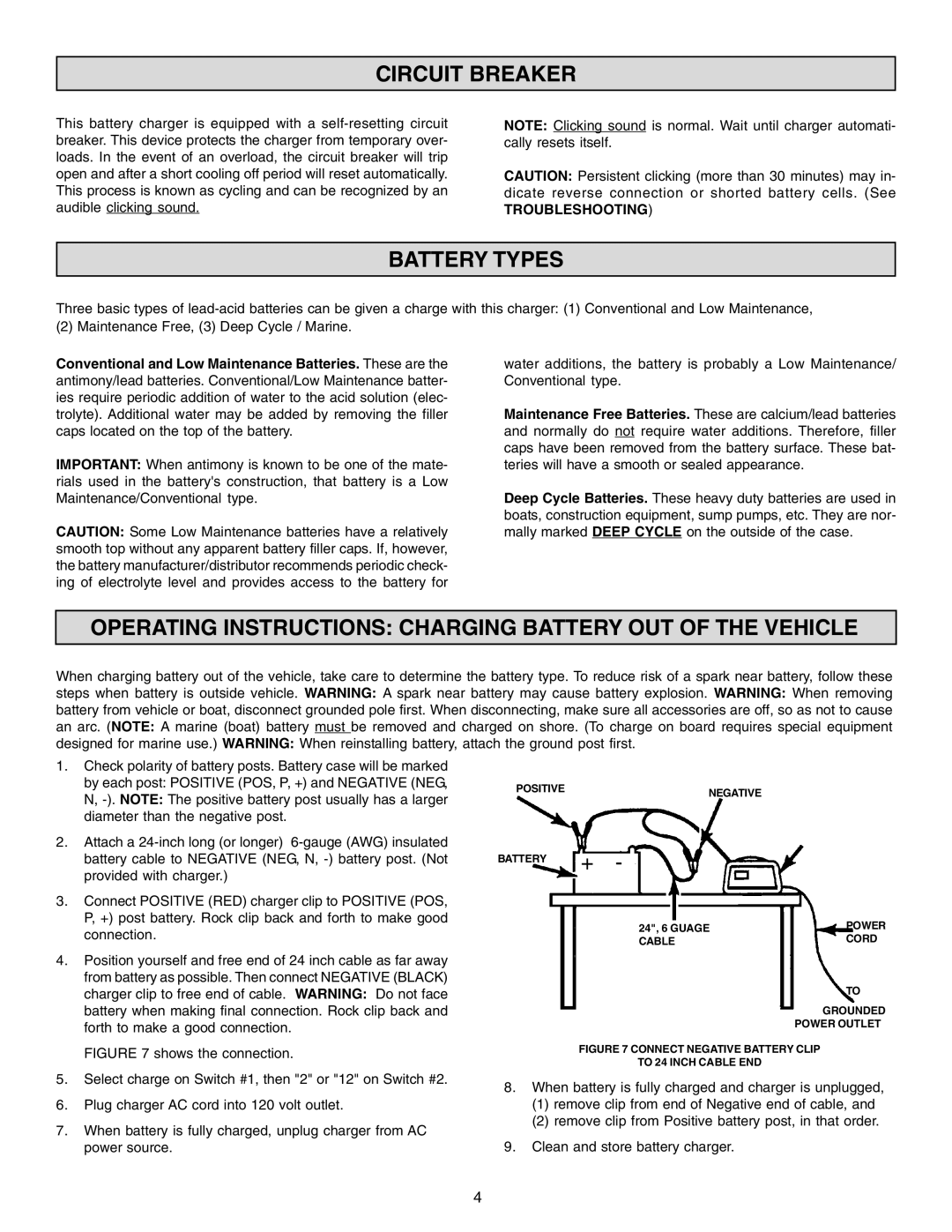SF-6275A-PE, 1275A-PE specifications
The Schumacher 1275A-PE and SF-6275A-PE are two advanced battery chargers that have gained popularity among automotive enthusiasts and everyday users alike. These models stand out due to their state-of-the-art technology and user-friendly features.The Schumacher 1275A-PE is designed for versatility, capable of charging a wide range of batteries, from standard automotive batteries to more specialized types such as AGM and gel batteries. It boasts a powerful 12A output, making it suitable for quickly charging larger batteries while maintaining efficiency. The charger utilizes a microprocessor-controlled system that ensures optimal charging with minimal risk of overcharging. This technology not only increases the longevity of the battery being charged but also enhances the safety of the operation.
In terms of user interaction, the Schumacher 1275A-PE features a clear and intuitive LCD display that provides real-time information about the charging status, voltage, and battery condition. This allows users to monitor the process easily. Additionally, it is equipped with multiple charging modes, including a trickle charge option that is perfect for maintaining batteries during prolonged periods of inactivity.
On the other hand, the SF-6275A-PE model takes performance a step further with its advanced features tailored for frequent users. It incorporates smart technology that automatically detects the battery type and adjusts the settings accordingly for optimum performance. This feature is particularly beneficial for those who own multiple vehicles or diverse battery types, streamlining the charging process.
Both models are equipped with safety mechanisms such as reverse polarity protection and short circuit protection, ensuring that users can operate the chargers without fear of damaging their batteries or causing accidents. The robust design of these chargers includes durable clamps and heavy-duty cables, ensuring long-lasting performance in various environments.
Another notable feature of the SF-6275A-PE is its lightweight and compact design, which makes it portable and convenient for travel. Whether at home or on the go, users can easily transport these chargers to ensure their vehicles are always ready for action.
In conclusion, the Schumacher 1275A-PE and SF-6275A-PE are exemplary battery chargers that combine advanced technology with user-friendly characteristics, providing an excellent solution for modern battery maintenance and charging needs. These models exemplify Schumacher's commitment to quality and innovation, making them a smart choice for both casual users and automotive professionals.

